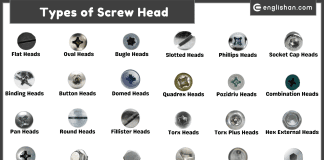Contents
A cannula is a skinny tube used in medicine for different things. One type, called an IV cannula, helps give fluids and medicine through a vein. Another kind, the oxygen cannula, gives extra oxygen to people who need help breathing. There are also cannulas for dental work, surgeries, and more. They’re like tiny tubes that doctors use to do medical stuff without being too invasive.
What is Cannula?
A cannula is a skinny tube used in medicine for different things. One type, called an IV cannula, helps give fluids and medicine through a vein. Another kind, the oxygen cannula, gives extra oxygen to people who need help breathing. There are also cannulas for dental work, surgeries, and more. They’re like tiny tubes that doctors use to do medical stuff without being too invasive.
Types of Cannulas
There are different types of cannulas designed for various medical purposes.
- Intravenous (IV) Cannula: Used for delivering fluids and medications directly into veins.
- Oxygen Cannula: Provides supplemental oxygen and is often placed in the nostrils for easier breathing.
- Dental Aspiration Cannula: Removes saliva and debris during dental procedures.
- Liposuction Cannula: Employed in plastic surgery to remove excess fat from the body.
- Arthroscopy Cannula: Used in arthroscopic surgeries to create a passage for instruments in joint procedures.
- Cardiopulmonary Bypass Cannula: Essential in heart surgeries to divert blood flow during specific procedures.
These different types of cannulas cater to various medical needs, each serving a unique purpose with a focus on minimally invasive procedures.
How Does Cannula Work
- Introduction to Cannula: Understanding the Purpose of a Flexible Medical Tube
- Intravenous (IV) Cannula: Direct Delivery of Medications and Fluids into Veins
- Oxygen Cannula: Enhancing Respiratory Support with Nasal Oxygen Delivery
- Dental Aspiration Cannula: Minimizing Discomfort in Dentistry Through Saliva and Debris Removal
- Liposuction Cannula: Shaping the Body: Precision Fat Removal in Plastic Surgery
- Arthroscopy Cannula: Navigating Joints: Creating Access Paths for Surgical Instruments
- Cardiopulmonary Bypass Cannula: Supporting the Heart: Redirecting Blood Flow in Cardiovascular Surgeries
- Minimally Invasive Advantages: Exploring the Gentle Approach of Cannulas in Medical Procedures
Uses of Cannula
Different Uses of Cannula are as follows:
Exploring the Versatile Applications of Cannulas:
Cannulas, those slender and unassuming medical tubes, have a multitude of applications that contribute to diverse aspects of healthcare.
1. Intravenous (IV) Cannulas:
- Channel medications and fluids directly into the bloodstream.
- Facilitate blood transfusions and chemotherapy treatments.
2. Oxygen Cannulas:
- Provide extra oxygen to those with respiratory challenges.
- Widely used in hospitals, clinics, and homes for respiratory support.
3. Dental Aspiration Cannulas:
- Aid dentists by removing saliva and debris during procedures.
- Ensure a clear field of vision for effective dental treatments.
4. Liposuction Cannulas:
- Sculpt the body by precisely removing excess fat.
- Common in plastic surgery for aesthetic enhancements.
5. Arthroscopy Cannulas:
- Enable surgeons to access joints with minimal invasiveness.
- Used for diagnosis and treatment of joint-related conditions.
6. Cardiopulmonary Bypass Cannulas:
- Redirect blood flow during heart surgeries for precise interventions.
- Vital for maintaining oxygenation during complex cardiac procedures.
7. Neurosurgical Cannulas:
- Drain cerebrospinal fluid or deliver drugs in neurosurgical settings.
- Assist in managing intracranial pressure during specific medical conditions.
8. Nasal Cannulas:
- Deliver controlled oxygen concentrations through the nostrils.
- Common in respiratory therapy and post-surgery recovery.
9. Gastrointestinal Cannulas:
- Administer enteral nutrition directly into the stomach or intestines.
- Support feeding for patients unable to eat orally.
10. Cosmetic Dermatology Cannulas: –
- Administer dermal fillers with precision, minimizing bruising.
- Enhance facial aesthetics through minimally invasive cosmetic procedures.
In essence, cannulas quietly revolutionize healthcare by offering precise, minimally invasive solutions across a spectrum of medical needs.

Parts of Cannula with Their Functions
1. Needle Grid:
- Keeps needles safe before use.
- Prevents accidental needle pricks and keeps needles sterile.
2. Injection Port Cap:
- Covers the injection port to keep it clean.
- Ensures that where things go in stays sterile.
3. Lever Lock Plug:
- Helps pieces stay connected during medical procedures.
- Prevents accidental disconnection, making procedures safer.
4. Blushing (Blood Flashback):
- Shows a visual sign of successful needle or catheter entry.
- Gives instant feedback that something is in the right place.
5. Needle:
- Pierces tissues for procedures like injections or blood draws.
- Allows access to veins or body cavities for medical tasks.
6. Catheter:
- Flexible tube for various medical purposes, like draining fluids or giving medications.
- Helps with different medical tasks inside the body.
7. Catheter Hub and Wings:
- Hub connects things, wings help keep it in place.
- Makes sure the catheter stays where it should after insertion.
8. Valve:
- Controls how fluids move in medical devices.
- Manages the flow of fluids, making medical procedures more controlled.
9. Flashback Chamber:
- Transparent chamber to see blood entry.
- Gives a clear sign that the needle or catheter is in the right spot.
10. Connector Cap:
- Covers and protects connectors, keeping them clean.
- Ensures that connections stay sterile and ready for use.
11. Tubing:
- Hollow flexible tubes for fluid or gas transfer.
- Acts as a pathway for fluids or gases during medical procedures.
12. Filter (for some types):
- Prevents particles or air bubbles from passing through.
- Ensures that only clean fluids or gases reach the patient.
Understanding these parts helps healthcare pros use equipment safely and effectively during medical procedures.
Key Features and Considerations
- Material: Cannulas are commonly made of materials such as plastic, silicone, or metal, depending on their intended use.
- Gauge: Refers to the diameter of the cannula. Smaller gauge numbers indicate larger diameters, and larger gauge numbers indicate smaller diameters.
- Length: Cannulas come in various lengths to accommodate different insertion sites and patient needs.
- Cuff (Tracheostomy Cannulas): Some tracheostomy cannulas have an inflatable cuff that provides a seal, preventing air leakage around the tube.
- Disposable vs. Reusable: Many cannulas are disposable, designed for single-use to reduce the risk of infection. However, some may be reusable and require thorough sterilization.
- Safety Features: Some cannulas come with safety features, such as retractable needles or blunt tips, to minimize the risk of accidental needlesticks.
- Compatibility: Ensure compatibility with the specific medical equipment or procedures for which the cannula is intended.
Care
Here are some tips for the care of a cannula:
- Cleanliness:
- Wash your hands and sit in a clean area before inspecting the cannula.
- Carefully clean the parts of the cannula, such as the hub and wings.
- Use of Adhesive Tape:
- Use adhesive tape to secure the catheter or cannula in place during use. This can prevent it from falling.
- Observing Cannula Condition:
- Check the blood flashback chamber during cannula use. Ensure that the cannula is in the right place.
- Always Keep Sterile:
- Keep the cannula sterile at all times. If any part looks dirty or damaged, contact a medical professional immediately.
- Protection of the Site:
- Cover the catheter hub and wings with a protective covering during use to prevent them from being dislodged.
- Cannula Bandage:
- Use a bandage to secure the cannula in place. This can prevent it from falling or moving.
- Avoiding Drafts:
- Place the catheter in a clean area with minimal airflow. This reduces the risk of infection.
- Regular Checkups:
- Regularly check the cannula, and if you experience any discomfort or pain, consult your doctor immediately.
- Consultation with a Doctor:
- If you encounter any issues with the cannula, seek prompt medical advice from a healthcare professional.
These are some basic tips for cannula care. Always remember to consult your healthcare professional for specific medical advice.
Avoid Mistakes
To avoid mistakes in the care of a cannula, follow these guidelines:
- Hand Hygiene:
- Wash hands before handling.
- Sterile Procedures:
- Follow sterile techniques during insertion and maintenance.
- Check Compatibility:
- Ensure all components are compatible.
- Inspect Before Use:
- Check for defects or contamination.
- Secure Properly:
- Use appropriate securing methods.
- Verify Placement:
- Observe blood flashback for proper insertion.
- Prevent Air Entry:
- Avoid introducing air into the system.
- Monitor for Complications:
- Watch for signs of issues at the site.
- Regular Inspections:
- Schedule routine site and equipment checks.
- Communicate Changes:
- Report any concerns promptly.
- Patient Education:
- Educate patients on complications.
- Documentation:
- Maintain detailed records of care.
- Professional Guidance:
- Seek advice when uncertain.
Prioritizing these steps ensures safe and effective cannula care.
Advantages and Disadvantages of Cannula
Here’s an advantages and disadvantages of cannulas:
| Aspect | Advantages | Disadvantages |
|---|---|---|
| Ease of Administration | – Facilitates easy administration of fluids and meds. | – May cause discomfort during insertion. |
| Minimally Invasive | – Less invasive compared to larger tubes. | – Limited for certain medical procedures. |
| Versatility | – Various types cater to different medical needs. | – Requires careful handling to prevent complications. |
| Reduced Trauma | – Tends to cause less trauma to tissues. | – Improper insertion may lead to tissue damage. |
| Quick Setup | – Can be quickly and easily set up for use. | – Risk of infection if not handled with care. |
| Patient Comfort | – Generally more comfortable for patients. | – Some patients may experience pain or irritation. |
| Observation of Blood Flow | – Blood flashback chamber provides visual confirmation. | – Flashback may be challenging in certain conditions. |
| Flexible Design | – Comes in various sizes and materials for versatility. | – Requires careful selection based on specific needs. |
Remember, the effectiveness and safety of cannulas depend on proper usage and adherence to medical guidelines. Always seek professional advice for specific medical situations.
Quiz:
- What is the main tube of a cannula called?
- a) Lumen
- b) Hub
- Which part of the cannula is the attachment point for external devices?
- a) Wings
- b) Hub
- What is the slanted or tapered tip of the cannula called?
- a) Bevel
- b) Flashback Chamber
- Which part of a cannula helps secure it in place with adhesive tape?
- a) Wings
- b) Flashback Chamber
- What is the transparent chamber used for visual confirmation of blood entry called?
- a) Flashback Chamber
- b) Catheter
- Which component may provide extra support during cannula insertion?
- a) Hub
- b) Stylet
- What covers the injection port of a cannula to keep it clean?
- a) Flashback Chamber
- b) Injection Port Cap
- Which part of the cannula is a flexible tube used for various medical purposes?
- a) Wing
- b) Catheter
- What connects different components of the cannula and joins it to other medical equipment?
- a) Valve
- b) Hub
- Which part of the cannula is often covered to protect it from contamination?
- a) Flashback Chamber
- b) Catheter Hub and Wings
- What is the central hollow space within the cannula through which fluids or gases flow?
- a) Lumen
- b) Bevel
- Which part of a cannula controls the direction of fluid flow in tubing?
- a) Flashback Chamber
- b) Valve
Answers:
- a) Lumen
- b) Hub
- a) Bevel
- a) Wings
- a) Flashback Chamber
- b) Stylet
- b) Injection Port Cap
- b) Catheter
- b) Hub
- b) Catheter Hub and Wings
- a) Lumen
- b) Valve
FAQs:
Q1: What is a cannula?
A cannula is a thin tube used in medicine for various purposes, such as delivering fluids, medications, or oxygen into the body.
Q2: What are the common types of cannulas?
Common types include intravenous (IV) cannulas, oxygen cannulas, dental aspiration cannulas, and liposuction cannulas.
Q3: How is an IV cannula inserted?
An IV cannula is typically inserted into a vein, allowing healthcare professionals to administer fluids, medications, or conduct blood transfusions directly into the bloodstream.
Q4: What is the purpose of a flashback chamber in a cannula?
The flashback chamber visually confirms successful needle or catheter entry into a blood vessel, providing immediate feedback to healthcare professionals.
Q5: How can I ensure the safety of a cannula during use?
Ensure proper hand hygiene, follow sterile procedures, secure the cannula in place with adhesive tape, and monitor for any signs of complications.
Q6: Can a cannula be used for oxygen therapy?
Yes, oxygen cannulas are specifically designed for delivering supplemental oxygen and are commonly used in respiratory therapy.
Q7: What precautions should be taken during cannula insertion to minimize discomfort?
Careful insertion techniques, use of appropriate-sized cannulas, and application of local anesthetics can help minimize discomfort.
Q8: How often should a cannula be inspected and replaced?
Regularly inspect the cannula site for any signs of complications. The frequency of replacement depends on factors like the type of cannula and the patient’s condition.
You May Also Like:
- Parts of Syringe And Their Functions
- Medical Equipment List in English with Pictures
- Parts of Eye and their Functions
- Body Parts: List of Human Body Parts in English
- Pronouns Words, Definition Kinds with Examples
- Parts of BP Apparatus Names in English with Their Functions
- Parts of Thermometer Names in English with Their Functions







